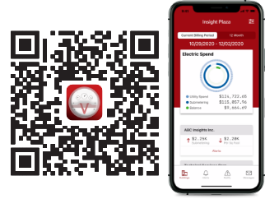How to Estimate Billing With Nulls, Zeroes, Gaps, and Other Problems in Your Meter Data
We all know that April showers bring May flowers. What do summer showers bring? Electrical disruption and data loss.
Shattered Windows, Shattered Data Streams
Outages from summer thunderstorms can shatter both the exterior building windows and the interior building data flow. But that's just one cause of data loss among several.
Some losses are just a blip in an otherwise full stream of data, but some are more destructive. Here are the main reasons for data loss and what to do if you find significant gaps in your meter data.
ROOT CAUSES OF DATA LOSS
1. Electrical disruption of the digital signal
Improper installation of the communication wires used to collect the meter data can affect the signal's and therefore the data's quality. Try checking for electrical interferences or incorrect wiring.
2. Loss of internet connection
The moment of data transfer is precarious. If the connection went out at just the wrong moment, the file may not have been received. Try programming your data collector to check that sent data was also received.
3. Loss of power to meter or data collector
Breakers being turned on and off disrupt the ability to take readings or collect them. The result is nulls (or blanks) in your data. It helps if you can keep track of when shut-offs happen so you know when to attribute nulls to those events (easier said than done, we know).
4. Cut wires
Renovation or maintenance work in the building frequently results in unintended wiring cuts. The result is that your meter suddenly “goes missing” in your collection system. Check daily that reasonable data is coming in from all points.
5. Lack of dedicated data collection system (for networked meters)
Using the BAS to manage the submeter system isn't unusual, but we don’t recommend it. Submeter data needs a system designed to handle the volume, frequency, and detail of meter data to get quality results. A designated submeter data collection system is worth it.
6. Faulty meter
Meters can fail, just like anything else. Those failures can look like unusually high or unusually low readings, or they can be some form of non-readings. If you suspect a meter is on the fritz, call an experienced meter technician for a service visit.
7. Data spikes
Older meters, some metering systems, and some BAS/BMS use an internal accumulator to count meter pulses to provide an accumulating meter reading. Those accumulators can fail and then recover, which shows up as a spike of extremely high usage in the data. To deal with spikes in your data, graph out the incremental (15-min.) data to identify the true highest usage. Then remove all data points above that value. Finally, rerun this amended data set and double-check that these usage numbers are in line with relevant previous usage.
Gaps in Your Data: How to Go From Zero to Hero in Your Tenant Invoicing
Holes in your data are a fact of life. But that doesn’t mean that this period's utility costs are lost. As long as you have a solid record of data from last year or previous years, you can make quite a reasonable billing estimate of the missing data using that historical data.
The formula we use weights the estimate using values that occurred around the same time as the missing value but includes values further back in time to account for variations in weather. The image below lays out one way to create such an estimate.

Caveats When Estimating Billing Data
- How to weight historical data can be very individual and affected by industry and region. The above formula is only one example of a weighted average.
- Changes in occupancy, tenant type, and weather (hello, climate change) are all important factors to be considered when estimating billing amounts.
- Estimated billing totals should ALWAYS be reviewed by an experienced billing analyst, who will review the estimate using load factor analysis, exceptions processing, and other recent events (such as weather or tenant turnover) to determine a truly reasonable estimate.
- If you have revenue-grade meters, your meters SHOULD retain 30 days of historic data and SHOULD be able to recover from a temporary outage without data loss. However, experiences vary.
Final Thoughts
Though submetering is never a “set it and forget it” system, the percentage of time you spend ensuring the data is flowing should be minimal. And when the inevitable gaps in your data occur, they don’t have to be catastrophic. With a little strategic thinking and some historical data, the problems caused by missing data can be vanishingly small.
Suspect something else is going on with your meters?
Causes of Problem Meter DataAbout utiliVisor
Your tenant submetering and energy plant optimization services are an essential part of your operation. You deserve personalized energy insights from a team that knows buildings from the inside out, applies IoT technology and is energized by providing you with accurate data and energy optimization insights. When you need experience, expertise, and service, you need utiliVisor on your side, delivering consistent energy and cost-saving strategies to you. What more can our 40 years of experience and historical data do for you? Call utiliVisor at 212-260-4800 or visit utilivisor.com

